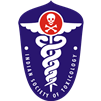Non-convulsive Status Epilepticus Secondary to Thiamethoxam Poisoning
Keywords:
NCSE; Neonicotinoid; Non convulsive status epilepticus; Thiamethoxam; Neurotoxicity; PoisoningAbstract
Introduction: Neonicotinoid compounds are newer group of neuro-active insecticides, widely used for crop protection. They are generally having a favourable toxicity profile in humans because of selective affinity to receptors in insects. However, fatal cases and severe toxicity has been reported in humans.
Case Report: We report a case of 55-year-old male who developed non-convulsive status epilepticus (NCSE) following ingestion of Thiamethoxam (neonicotinoid compound). The patient was consumed 250 mL of Thiamethoxam and brought to emergency department in an unconscious status. Continuous electroencephalography monitoring showed, recurrent non-convulsive generalised electrographic seizures (EGS) occurring at frequency of one EGS per 3-4 minutes with altered sensorium despite not on sedation. He subsequently developed intensive care unit (ICU) acquired weakness and tracheostomised in view of difficult weaning. After 14 day of treatment, the patient was directly discharged from the ICU at stable condition.
Conclusion: This case report emphasises the importance of monitoring NCSE in patients with disorientation. It is desirable to screen for NCSE in patients with neonicotinoid compound poisoning and altered sensorium.


